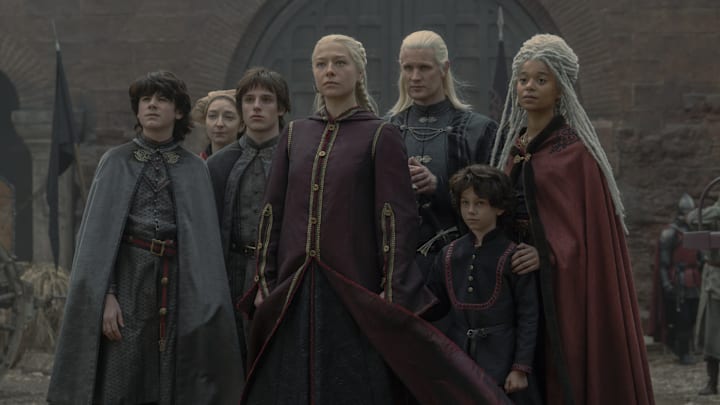
2. The Royal Hunt and the White Stag
The third episode of House of the Dragon includes two major set pieces revolving around two of the shows main characters. First, we see Daemon Targaryen’s war for the Stepstones as he struggles to overcome the forces of the Triarchy and prove his worth as a military commander. It is visually spectacular and completely unsatisfying. In one of a few warning signs to come out of season 1, the battle for the Stepstones worryingly displays some of the failings of the final two seasons of Game of Thrones: plot and character development are sacrificed to set up a big-budget action sequence, leaving the watcher disappointed despite the eye-popping effects.
The other major set piece of the episode is the royal hunt to celebrate Prince Aegon’s second birthday. An upper-class class bash full of drama and cutting verbal barbs worthy of Downton Abbey, but with the fantasy genre flare in the form of a mystical white hart, the royal hunt proves far more satisfying than the climactic battle sequence. The politicking and court dynamics on display during the hunt put on display the high stakes world all of the great houses of Westeros must navigate. Not in the entirety of Game of Thrones were the consequences of passing comments and gossip so on display.
Throughout the scenes of the royal hunt, which is a show fabrication not present in the book, we see that following the birth of a male heir to Alicent and King Viserys, the lords of Westeros are seeking to change the line of succession. Rhaenyra is forced to suffer a proposal by Jason Lannister, an idiot, while her father is forced to display his weakness and impotency as the hunt culminates in his killing a stag that has already been tied up. The white hart, a symbol of royalty in pre-Targaryen times, appears only to Rhaenyra, who lets it go in an act of mercy.
Altogether, this scene does more for character development and world-building than any other sequence invented for the show.
